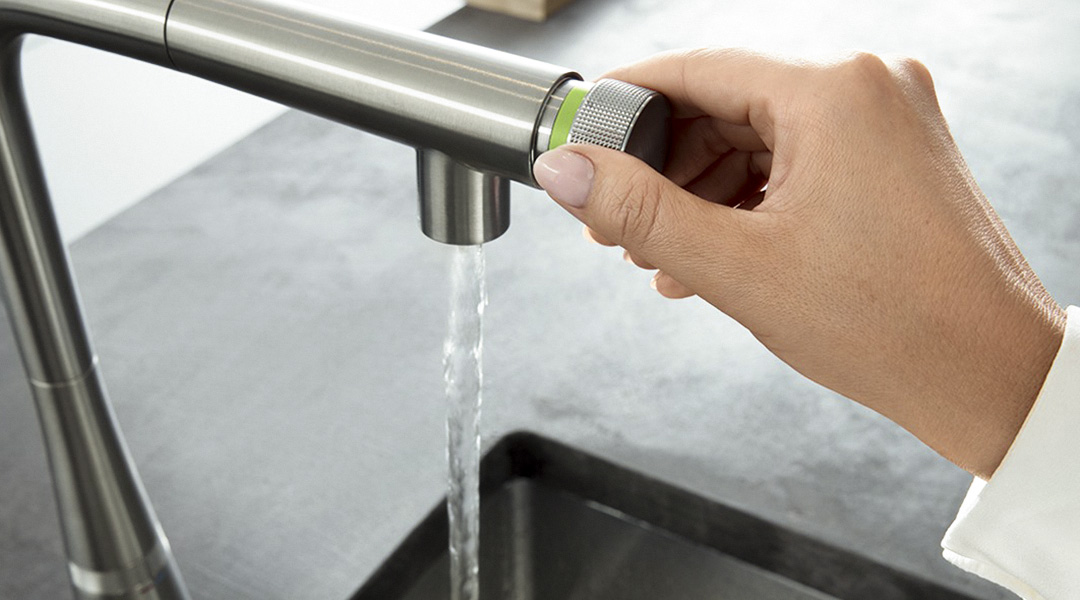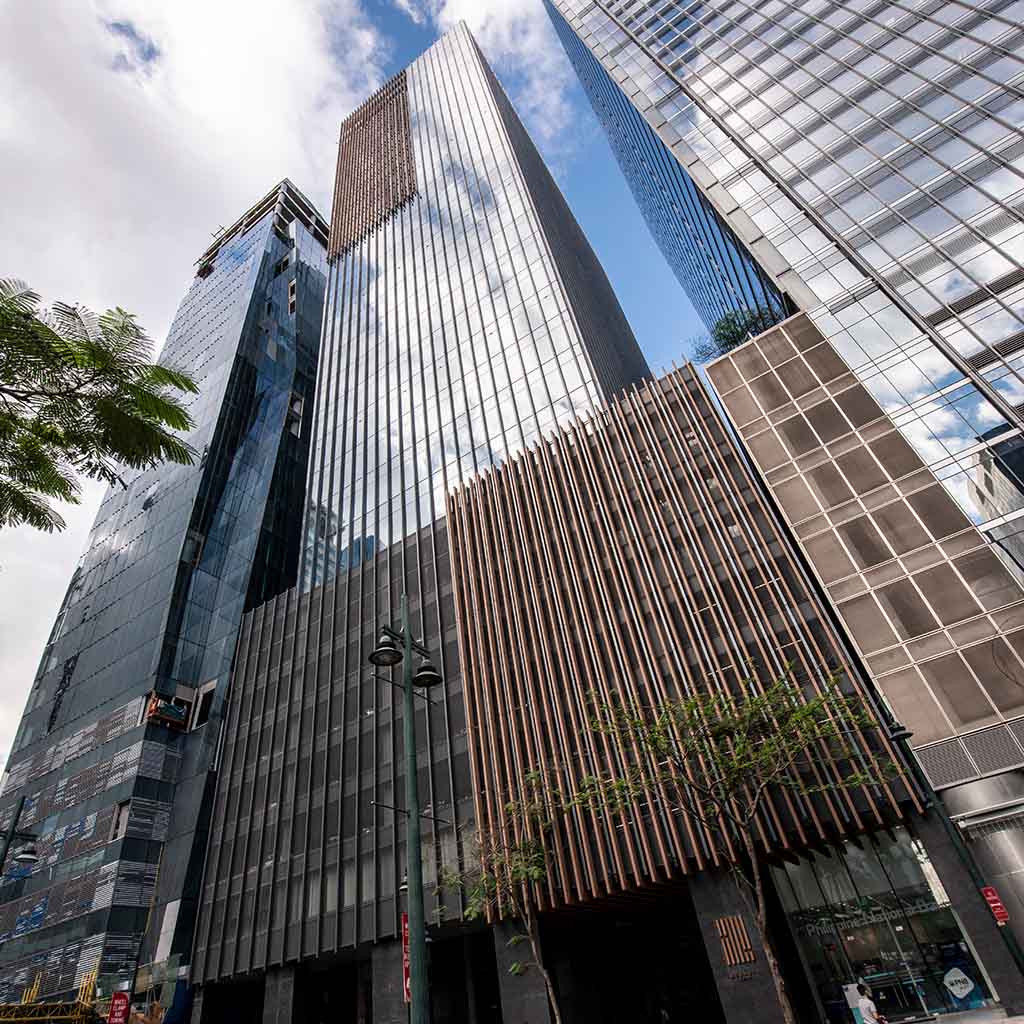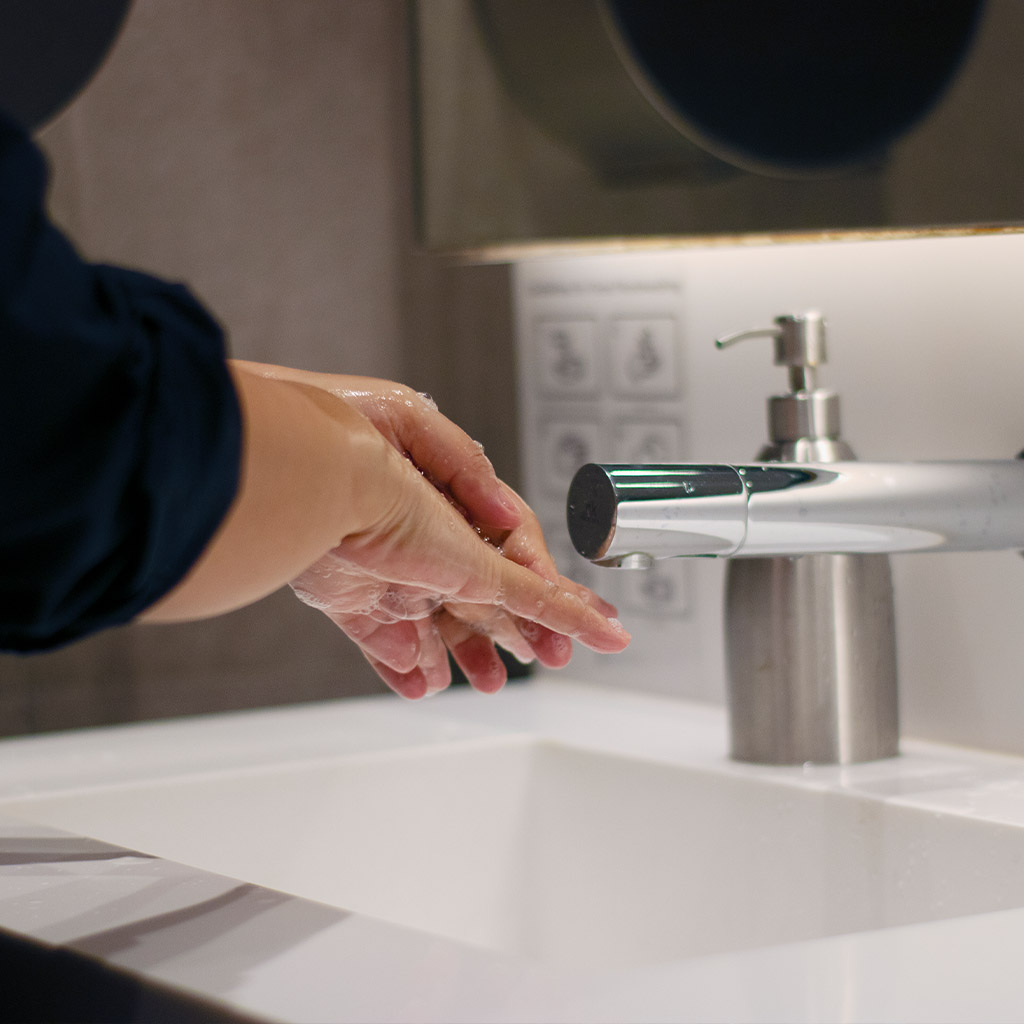
Saving Each Drop of Water is the New Gold Standard
The change starts with a single drop of water, a value that LEED and WELL have set their standards for. LEED and WELL certifications are pursued by building owners and have become a motivation to design architectural advancements with a purpose in the pursuit of impacting the human health, mind, and environment. Receiving certifications from these two notable names creates a sense of security for the people who come and go in certified buildings, as it means that the area embodies a safe environment with clean air, fresh water, and efficient nourishment. This feat was accomplished by the Menarco Tower, which is both LEED Gold and WELL Gold certified, as well as the Nex Tower, which is LEED Platinum certified.
These two buildings have set a gold standard and became the example for leading an energy-sustainable way of being. Before the pandemic that ravaged the world last 2019, carbon emissions have reached an all-time high, accounting for 38% for all energy-related CO2 emissions. In order to achieve a net-zero carbon building stock by 2050, it is recommended by the International Energy Agency to reduce building sector emissions to around 6% starting from 2020 to 2030.
This objective can be accomplished by promoting irrigation methods that make use of recycled water.
Setting the standard
Menarco Development Corporation’s Carmen Jimenez-Ong and Nova Group’s Chut Cuerva both live by the same principle—that carbon emissions can be safely reduced by simply switching to renewable energy sources and increasing resource efficiency. This means that it is possible for a single drop of water to reach great lengths with just the right amount of sustainable building material and meaningful architecture.

“It comes from a philosophy of treating water like gold, saving it when and where you can,” advises Jimenez-Ong.
The results of these beliefs have blossomed forth when the Menarco Tower has reduced potable water use by 47.49%, only made possible because the landscaping and irrigation systems of the Menarco Tower were designed to only use recycled water. By operating a gray water system for activities that do not require potable water for drinking and filtering out water from condensate drains, wastage is automatically reduced as water cycles it back to the system to feed the plants around the area.
Signs are placed all over the building, encouraging everyone to plant and cultivate greens on the podium garden. This way, water can be stored for other uses aside from drinking. Menarco Tower puts these everywhere, as their goal is not only to promote, but to also educate visitors and onboarding tenants.
Aside from these signs, Jimenez-Ong cascades house rules through other practices. “Menarco is my only baby. So, come, you are welcome to enjoy it, but let’s learn how to use it. We have a video. We have written forms, almost like a test, just so we know that they know. We do this prior to issuing you an RFID. I don’t want to hear that you flushed something that clogged our system because you didn’t know.”

On the other hand, Nex Tower, located in Ayala Avenue, also utilizes the same principle by collecting rainwater that falls on the roof and harvesting it to irrigate the plants. When you enter the building, you’ll notice that vast expansion of green plants populating the tall walls of its interior. Nex Tower is said to own the country’s largest green wall. Additionally, the back lobby entrance is also a home for plants. No potable water is used to keep them fresh and healthy.
“You wouldn’t think there’d be water shortages when it rains like crazy here. But what we are trying to do is store the water. When there is plenty of water, you can store that so when there is no water, you use that. It’s a similar predicament to solar panels. When it is sunny, you want to store that energy in a battery and then use it when the rates are expensive,” says Cuerva.
Evidently, Jimenez-Ong and Cuerva certainly practice what they preach. With these methods, even a single drop of water revolves around the many systems within the building before it slowly gets discharged into the sewage. By effectively capturing rainfall and integrating it into reusable water into the systems, flooding can also be controlled in these cities. By studying the various technologies to create an advanced and health-driven building, the environment can significantly change for the better in the future.


Related: LIXIL and GROHE’s Water Detection and Filtering Systems are both practical and efficient
Modernizing water conservation with GROHE
In addition to their established systems, Cuervo also believes that having a flawless selection of bathroom and kitchen fixtures, such as faucets and drains, could aid in the road to sustainability. As it is, there is still no way to control the actions of other people, especially tenants, which is why water is often left running and wasted.
This issue can be fixed by applying a sensor in the faucets to automatically turn it off, something that can also be done by applying the auto-flush technology in toilets wherein the sensor system can calculate the amount of water needed parallel to the amount of time someone has been sitting on it.
“So that’s the approach we took. By choosing the right fixtures, we are saving 46% more water than your standard building,” says Cuerva.

For buildings like the Menarco Tower and Nex Tower, there are groups and brands that align with the same objective, fortunately. LIXIL is one of them—a Japanese pioneering manufacturer that produces world-leading technology to innovate water products that transform homes and solve real-life situations.
“What I was hoping for are things from groups like LIXIL to help us figure out how to be more efficient in conserving not just water that we see but also water that we don’t see,” Jimenez-Ong says.
Part of LIXIL’s brands includes GROHE, the leading global brand for complete bathroom solutions and kitchen fittings since 2014. Every product is carefully selected and created with GROHE brand values—quality, technology, design, and sustainability. GROHE is entirely focused on customer needs and satisfaction and never fails to deliver. The products are manufactured in Germany, which is also stamped in all of their releases.
GROHE’s intelligent and life-changing Sense and Sense Guard water monitoring systems are designed to manage leaks and pipe damages by alerting homeowners of these conditions in order for them to be addressed immediately. As part of its data, GROHE’s Sense and Sense Guard app monitors water consumption and reports it to increase awareness on a building’s water usage, prompting the administrators to take quick action on adjusting the water supply only according to how much the building needs.

Besides that, GROHE also offers products such as their Aqua Ceramic, which promises to instill cleanliness in your products, thereby reducing the amount of water needed to remove dirt. American Standard’s Genie can also help save up to 35% of water for every use. GROHE’s exceptional products resulted in a Cradle-to-Cradle Gold certification, evidence that supports that GROHE’s products are produced in a safe, responsible, and environmentally-friendly manner.
The change starts with a single drop of water, creating ripples that connect us to the world. By setting a gold standard and patronizing the right products, we can inform and educate the people from all walks of life. With the practices here in the Philippines all the way to the values of globally-known groups like LIXIL, let the ripple effect cross oceans and create a better world.
For more information about GROHE, visit their website and be a part of the revolution.


